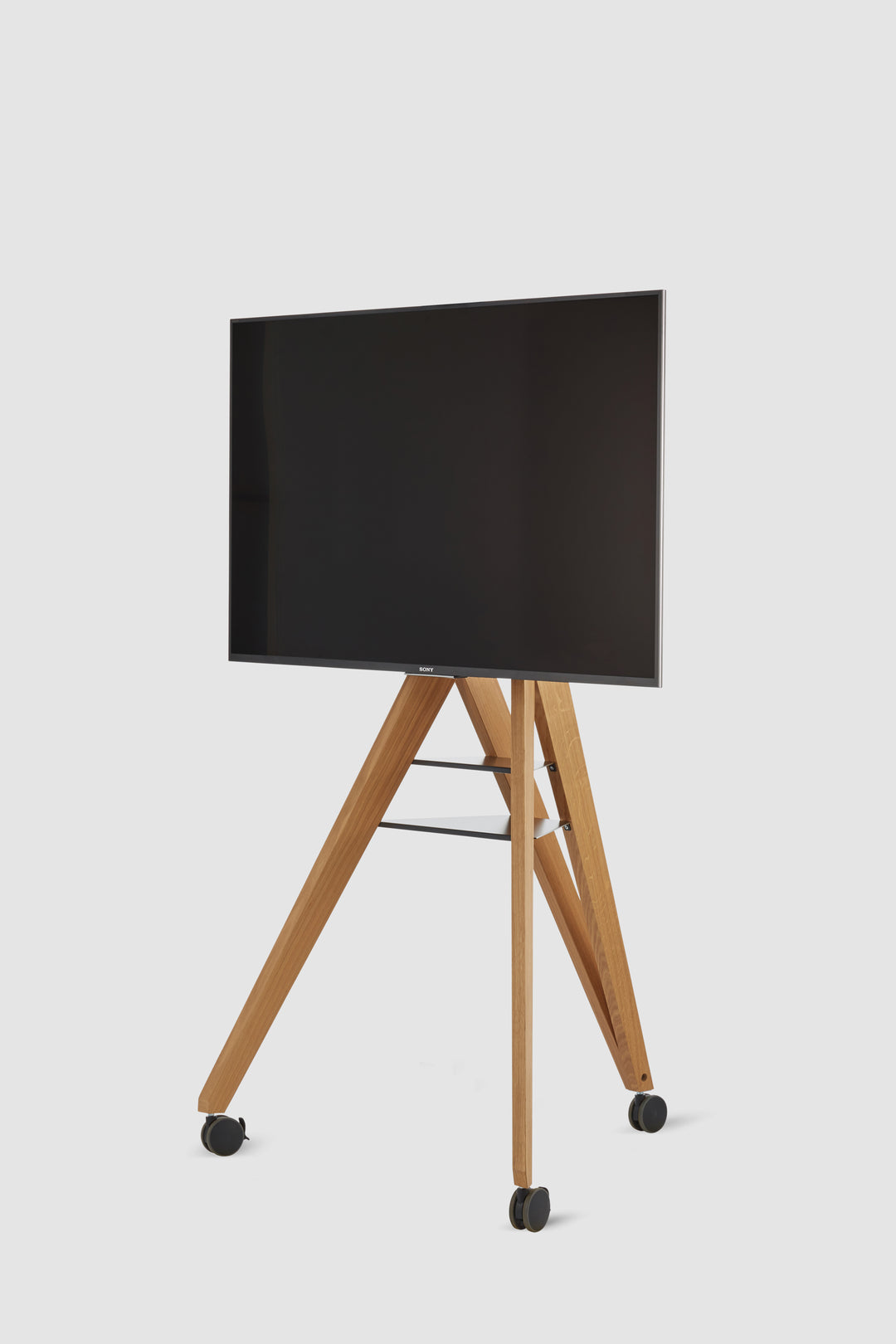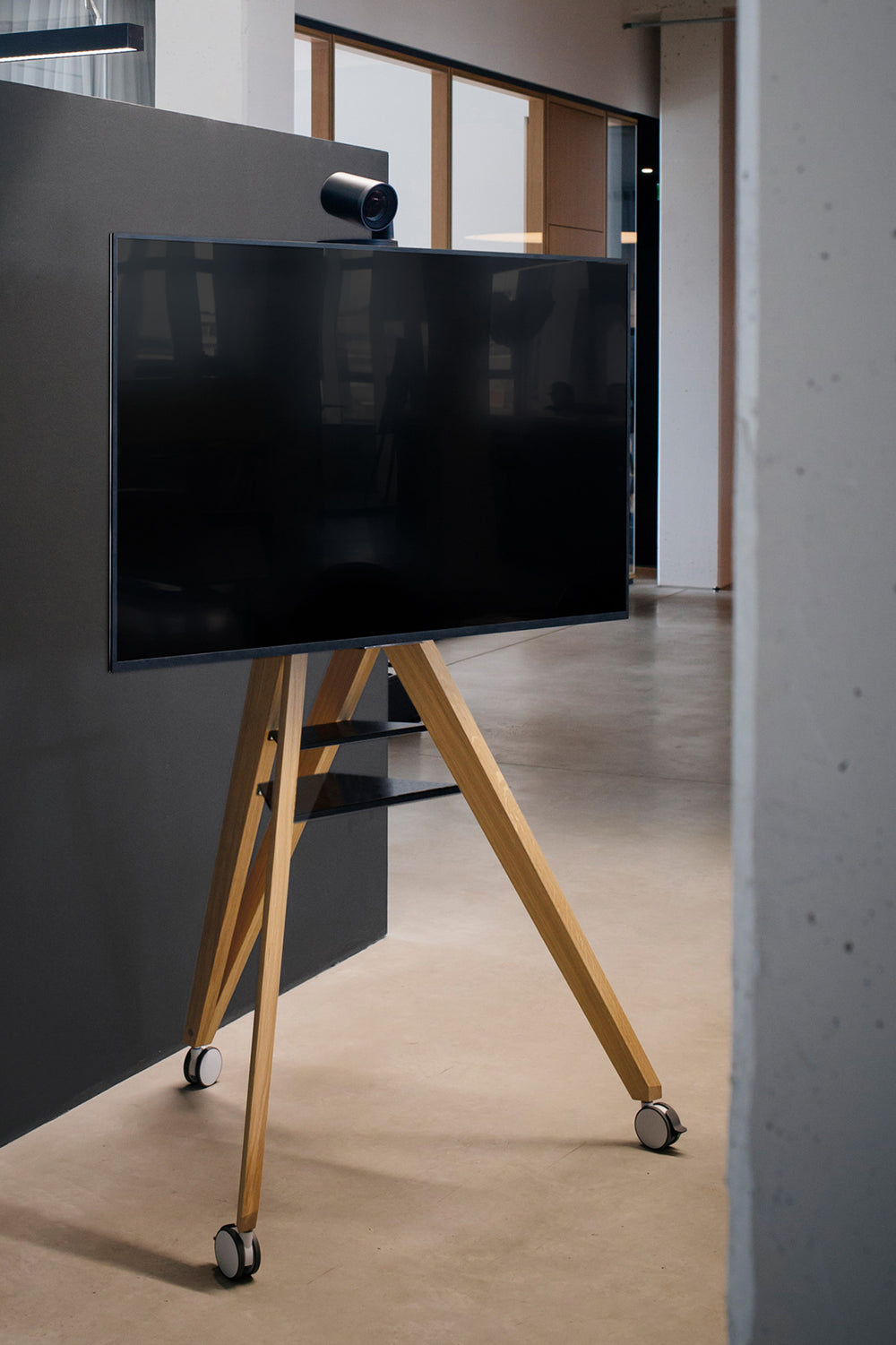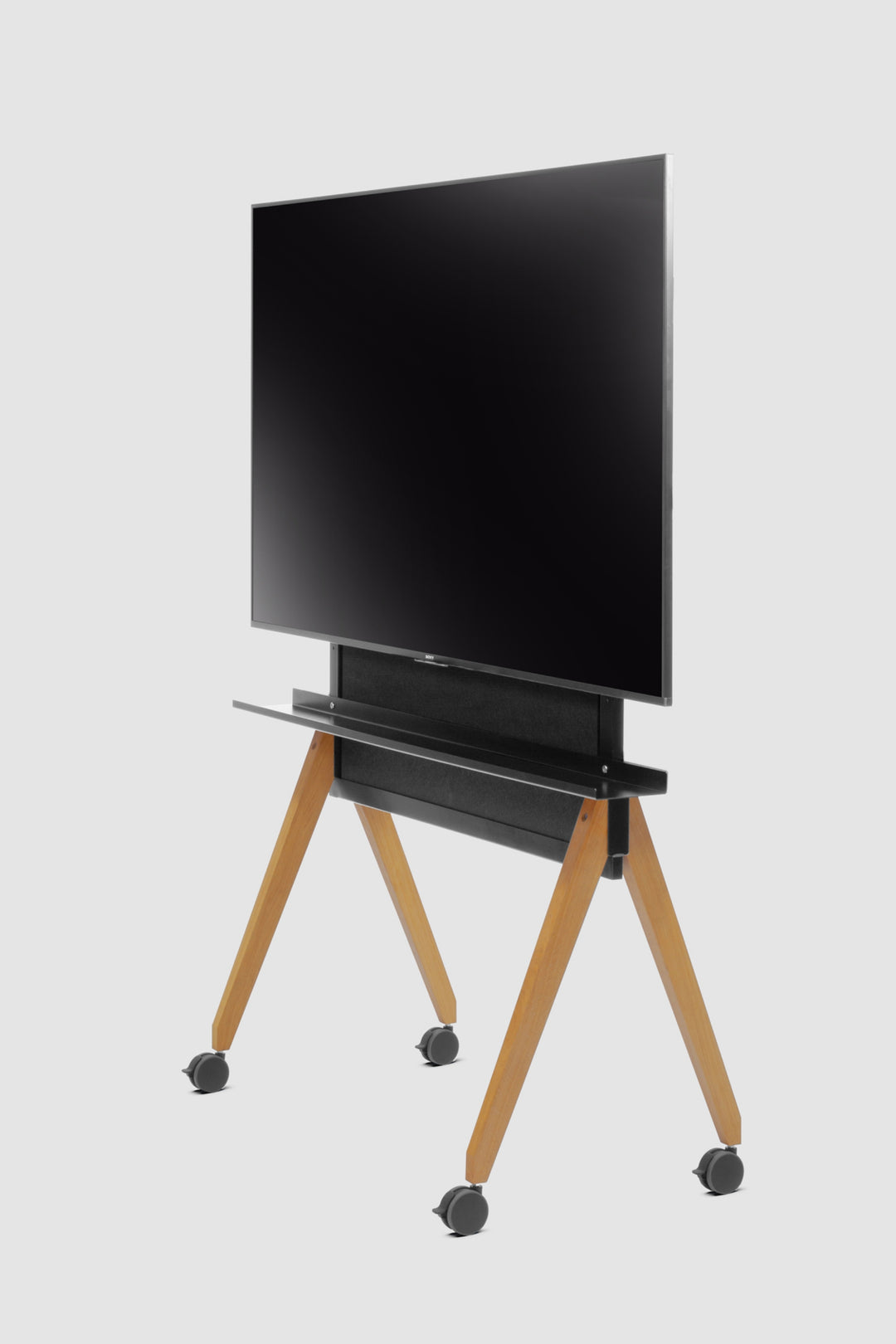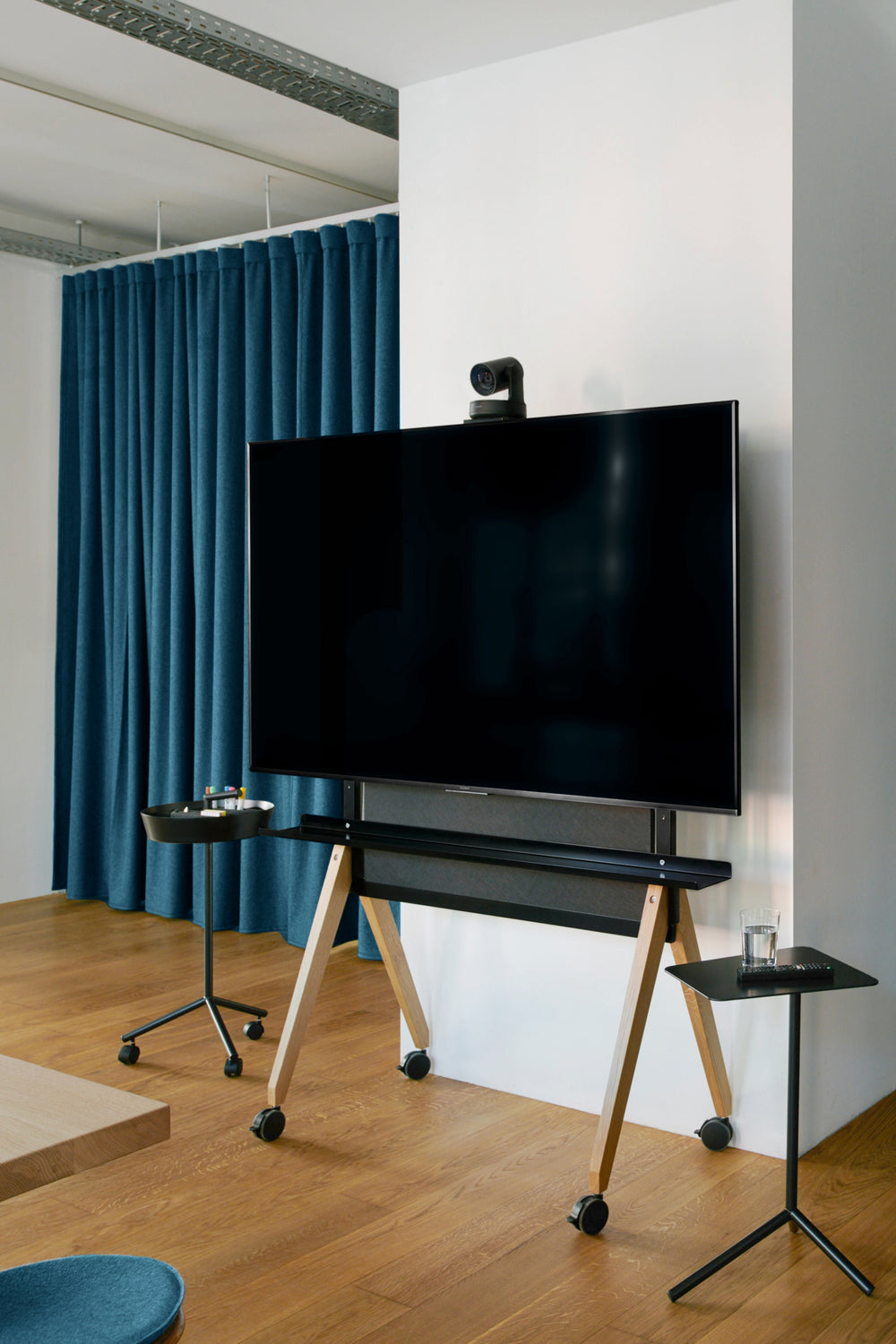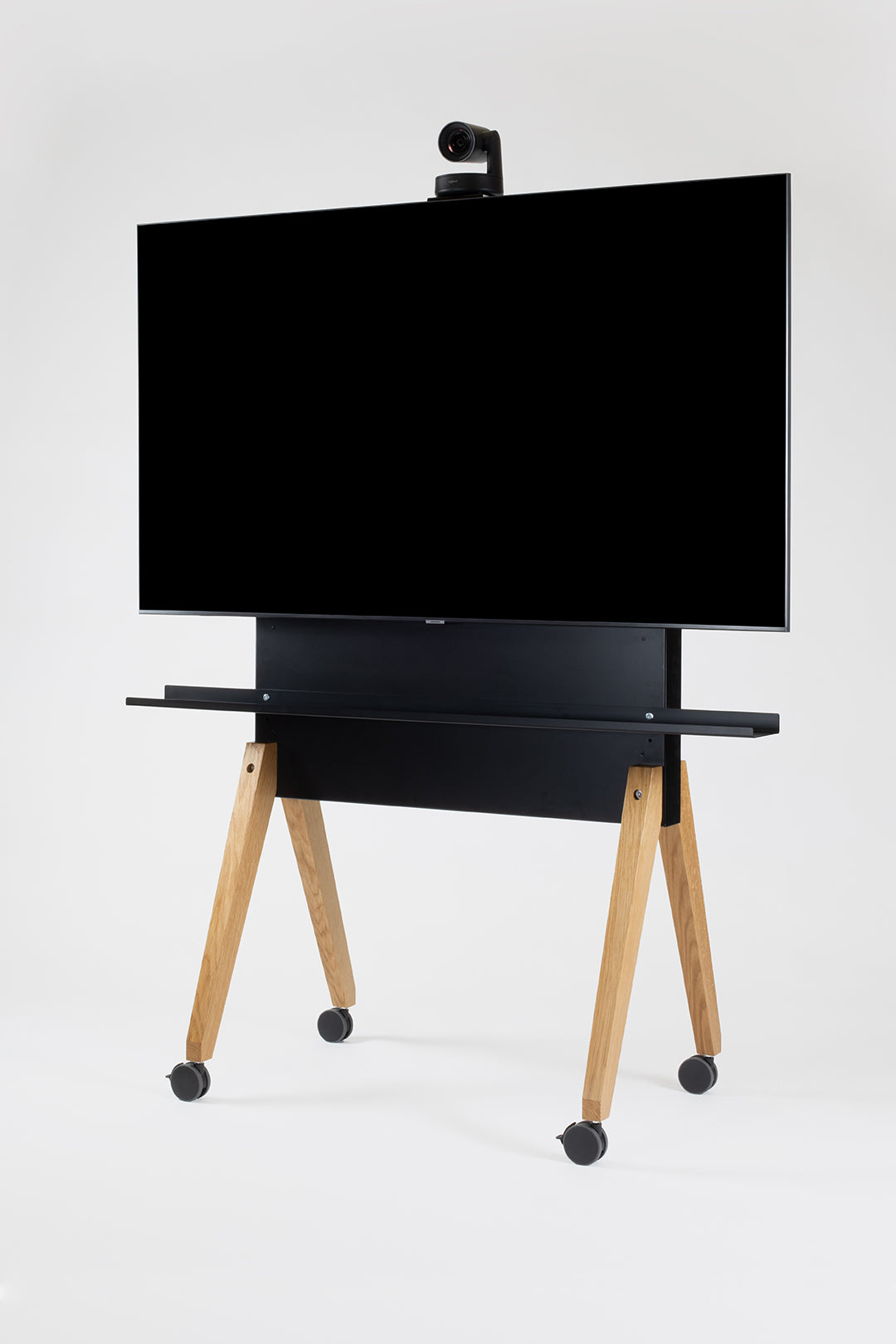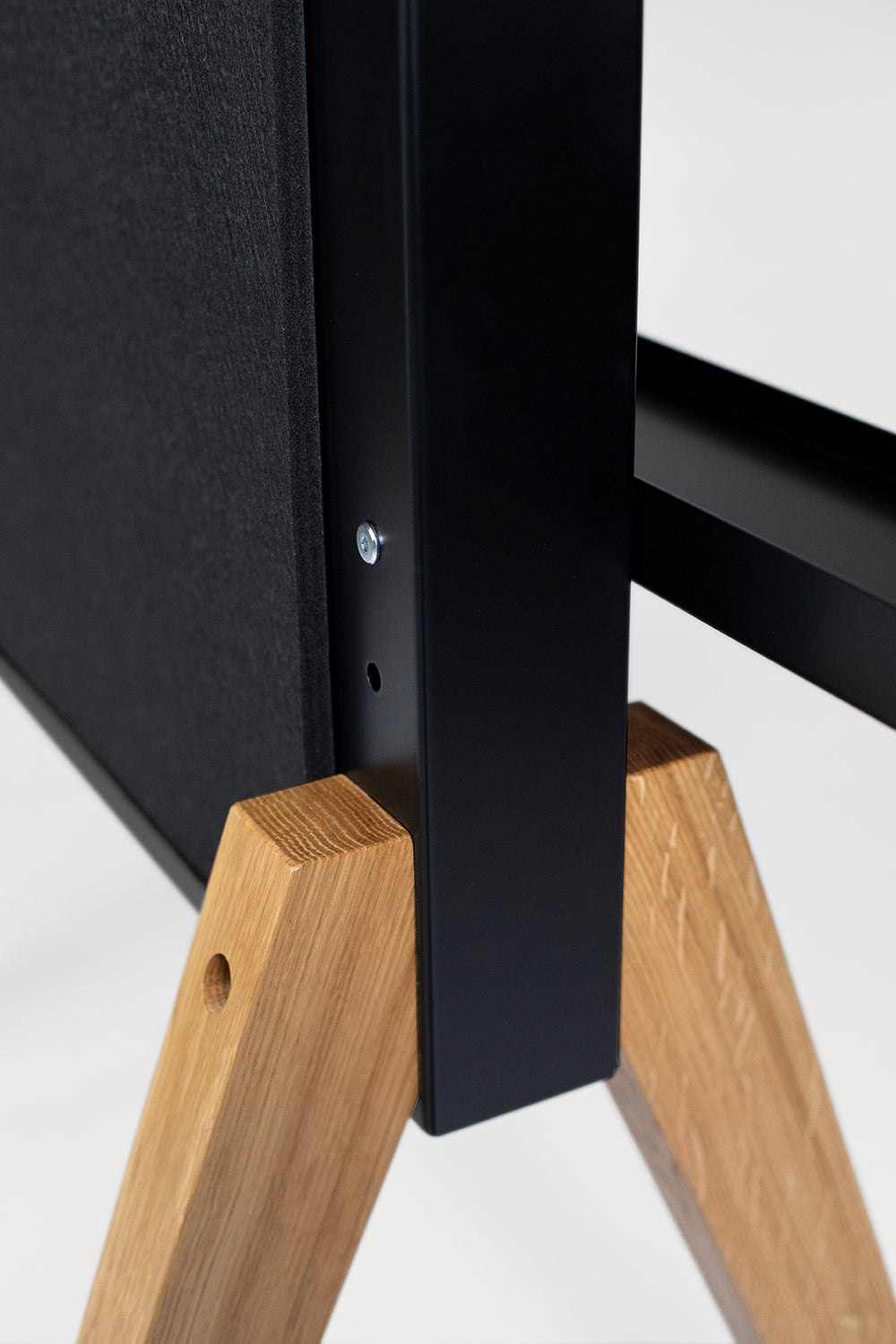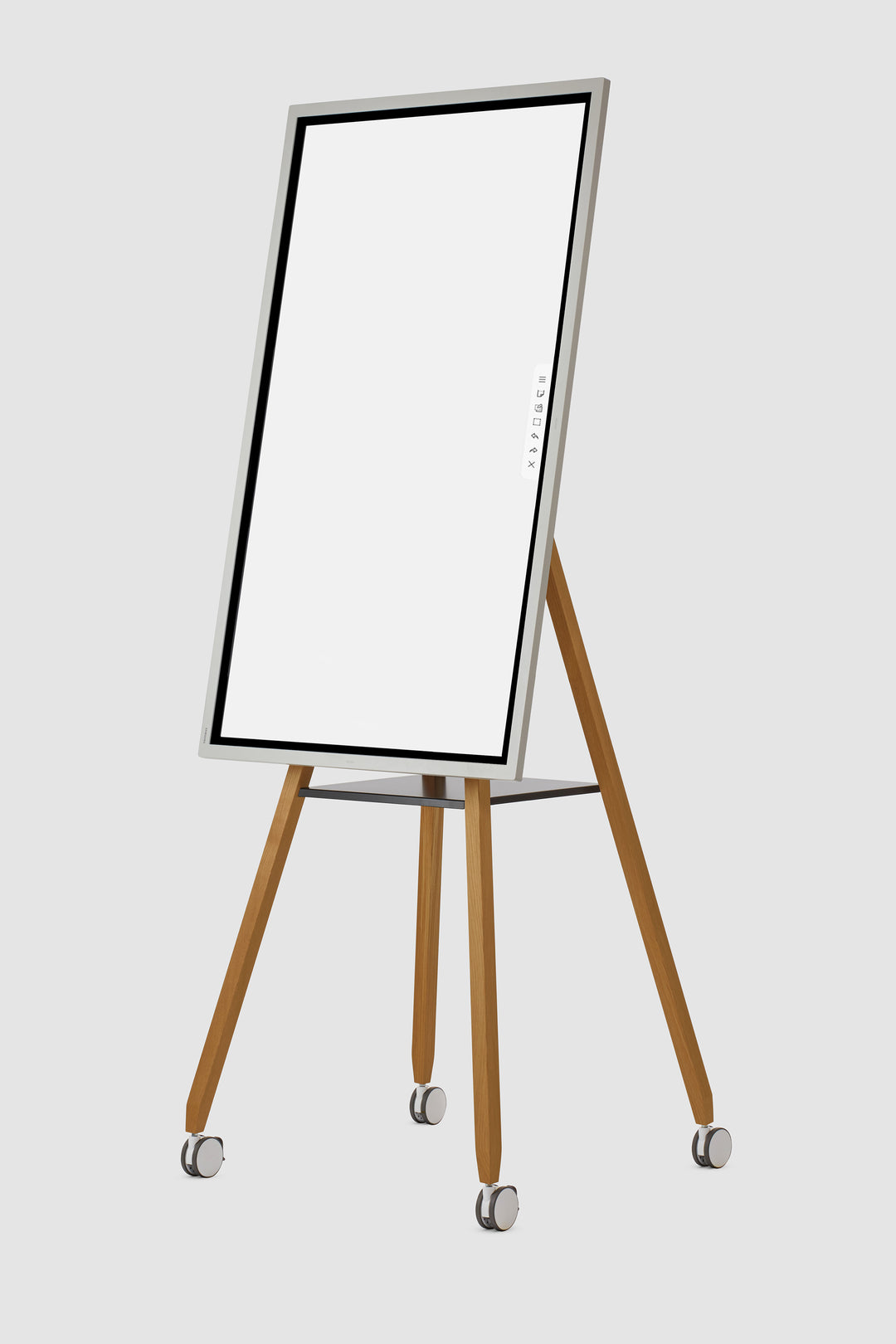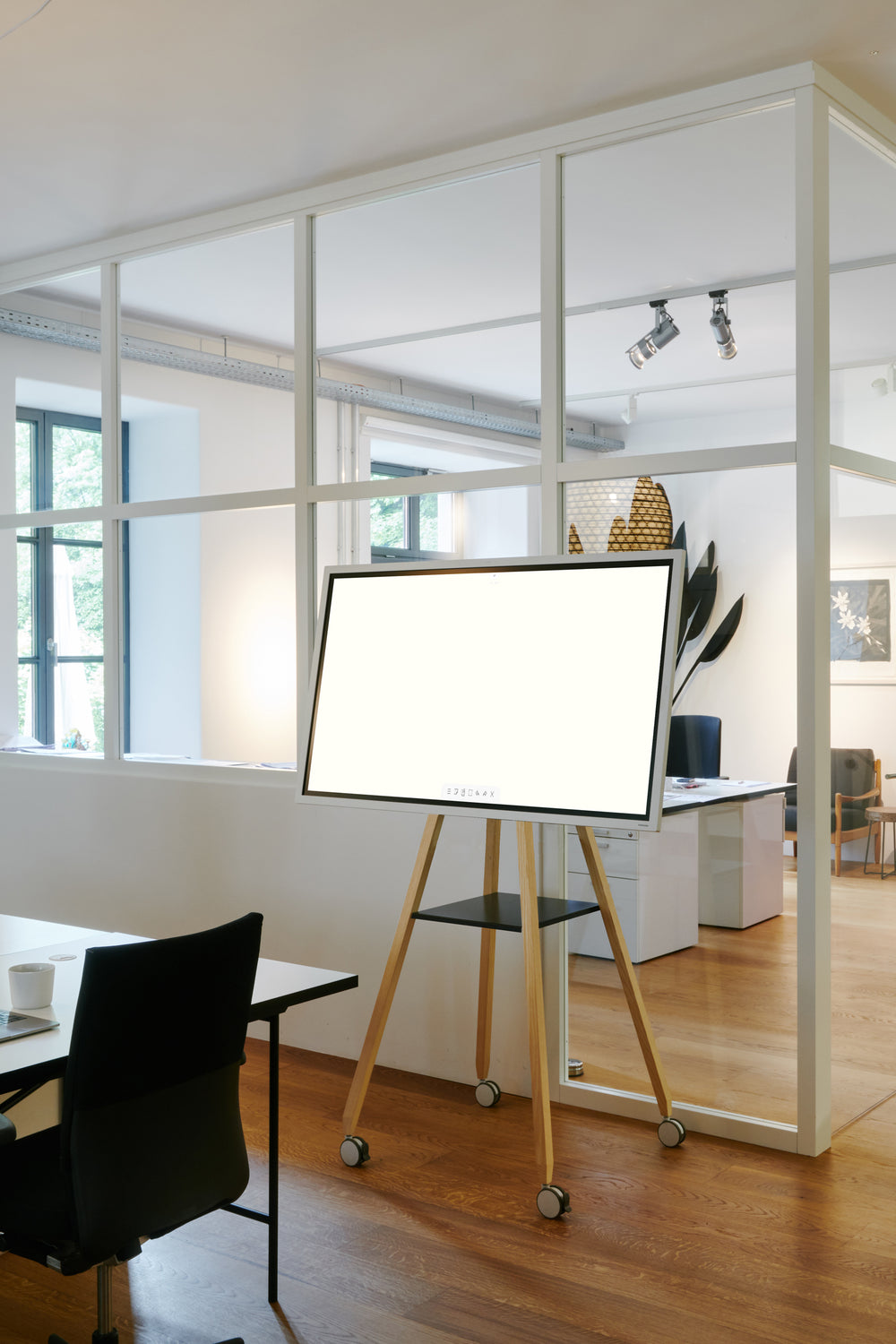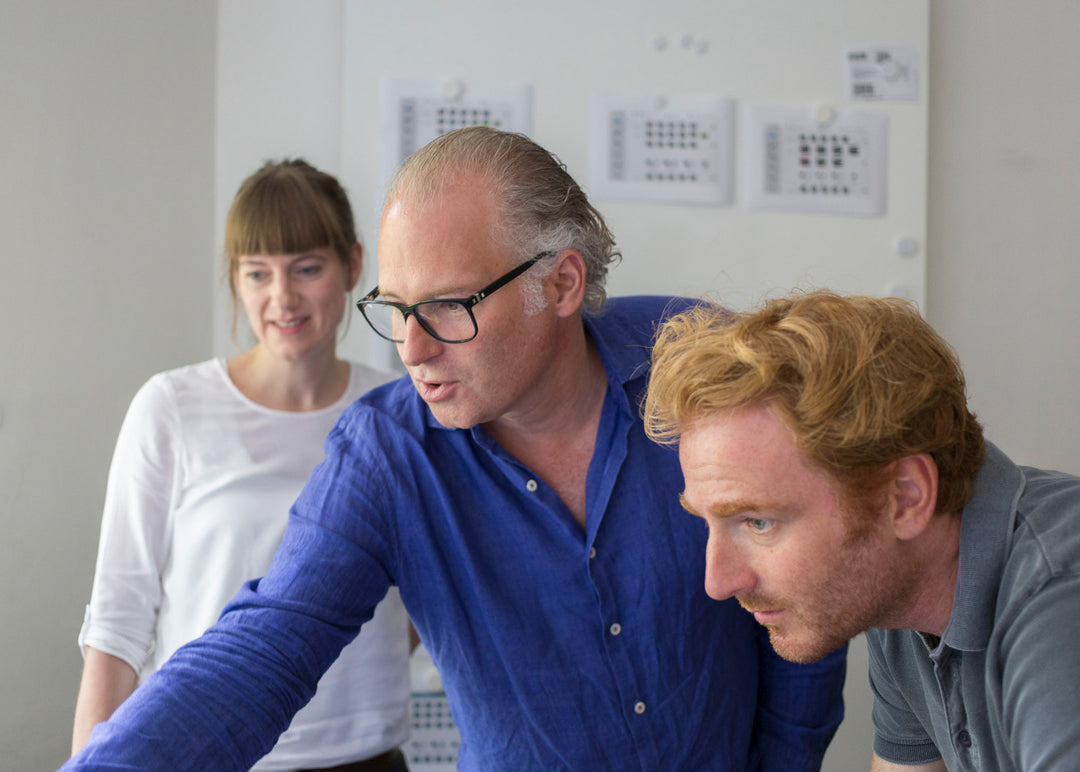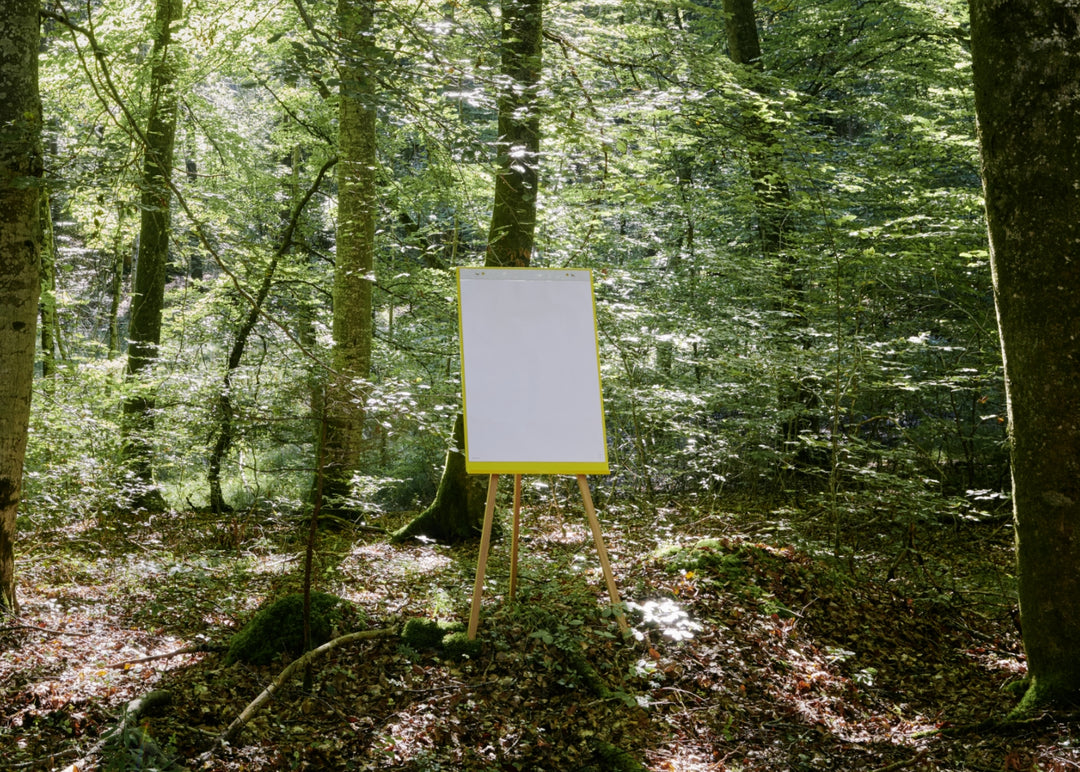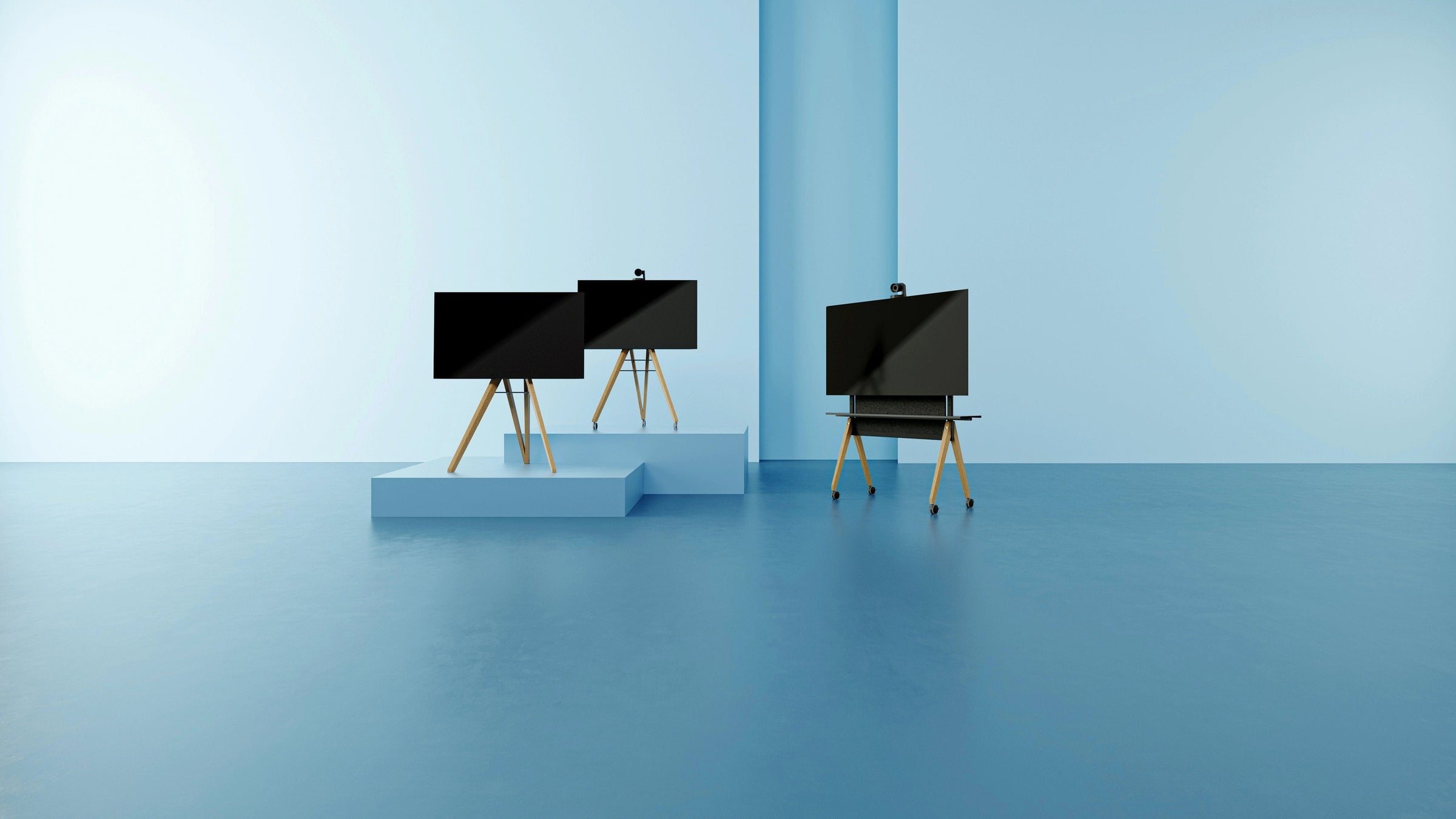
TV stands and display carts
How do good ideas come about? Often quite inconspicuously – in small, personal ways. When there's space for it. An environment that doesn't distract, but inspires. That sparks curiosity. That's stable – yet open to change. It's precisely this kind of framework that gives rise to new things. And that's exactly where our story begins.
In 2012 we noticed: There was hardly any
Andreas Struppler had already worked for years as an industrial designer for renowned brands with Struppler Industriedesign – from the initial concept to series production. But at some point, it was time to stop designing for others and create his own collection. One that perfectly reflected his vision: well-conceived, high-quality, versatile – and with a clear, clean design.
This is how it came about
Modern office furniture for virtual and local collaboration
A well-designed office environment is an integral part of any modern office setting. It promotes productivity, morale, and innovation, and improves spatial design and acoustics.
Modern furniture plays a central role in team communication and collaboration, creating inspiring spaces for physical and digital cooperation.
“New Work” puts people at the center: work-life balance, collaborative work, and remote work. Interior design should reflect this change – through flexibility, zoning, and inspiring design.
Our products are largely manufactured in southern Germany – for short transport routes and high flexibility. Some purchased components, such as
We use durable oak and ash wood from Germany, Austria, and the Czech Republic. It is robust, high-quality, and can be easily separated by type after use – ideal for a circular economy.
Our packaging is recyclable and bears the "Green Dot" seal. Transport and protection are our top priorities.
All components can be purchased individually if needed – for maximum lifespan and sustainability.
All our products are designed for long-term use. Individual parts can be replaced if needed – whether
Our
You can find our warranty conditions and care instructions compiled in the FAQ or in the respective product data sheet.
Designer TV stands: How to foster collaboration in an increasingly hybrid working world
TV stands and monitor carts with

What is a designer TV stand?
A designer TV stand is more than just a product to mount your television or monitor. It's a piece of furniture that... not only functional, but also aesthetically pleasing is. These TV stands are in a Variety of styles and designs available so that they fit into any type of Residential- and work culture are a good fit. They are both practical as well as stylish and often offer additional storage space or mounting options for media and video conferencing equipment.
The appeal of wooden TV stands
Wooden TV stands have long been a popular choice among homeowners and businesses. classic beauty and warm inviting appearance enhance all the rooms. A wooden one base can thereby made from different types of wood It can be made from various woods, such as oak, ash, mahogany, or walnut. Each type of wood has its own unique characteristics and, depending on the choice, can give your office (or property) a very distinctive look and feel.

Furthermore, wooden TV stands are also especially durable and robustThey are capable of supporting the weight of a large television and, with proper care, can last for many years.
What are the advantages of a designer TV stand?
There are several advantages to why a designer TV stand is a good addition to the office or meeting area.
- flexibilityA TV stand offers you the flexibility to place your monitor wherever you like. Unlike TV wall mounts, which require a permanent location, you can easily reposition your TV stand as needed and adjust it to the number of people present and the lighting conditions.
- styleA designer TV stand allows you to present your monitor or touchscreen in an elegant way. Modern and minimalist designs blend perfectly into the atmosphere of today's work environments.
- FunctionalityMany designer TV stands offer additional features such as mounting options for camera systems from Logitech, Poly, Webex, or Cisco, or for conference solutions like ClickShare and other equipment. Most also have integrated cable management systems to organize power and cable routing.
- Easy installationUnlike wall mounts, which sometimes require professional installation, TV stands are generally easier to install and require little to no technical expertise.
What factors should be considered when buying a designer TV stand?
Before choosing a model from our collection of TV stands, you should define, which requirements You connect them to your system. There are several factors to consider when buying a designer TV stand:
- Size: One of the most important factors is the size and type of TV stand. It should be large enough to securely hold your television, but not so large that it takes up too much space.
- VESA dimensions: The VESA standard refers to the specific dimensions of the mounting holes for the bracket. These are usually indicated on the back of your television or in the user manual and should be taken into account when choosing a suitable monitor stand.
- material && Processing: To ensure the necessary robustness for daily use and to be able to support the weight of the television, the monitor stand should be made of high-quality materials.
- Price: While high-quality designer TV stands are generally more expensive than conventional TV stands, they are often a worthwhile investment if they offer the corresponding range of features. The careful craftsmanship of the materials, combined with their aesthetic appeal, makes designer TV stands a durable and attractive piece of furniture.
Furthermore, the size of the room and the type of use are crucial, especially for businesses. Always in the same room, or flexibly across a floor or shared space? Depending on the intended use Either a mobile or stationary TV stand.
What are the alternatives to high-quality TV stands?
Although TV stands are a common option, there are also some alternatives. which depend on your needs represent a better choice. One of them is the wall mountingWall mounts are particularly useful in rooms with limited space and are suitable for anyone who wants to... Main focus on the screen want to fix it.
Another possibility is to TV cabinets These typically offer more storage space as a TV stand, however, they are often larger and not as flexible like TV stands. A third alternative is the TV shelfIt offers plenty of storage space and is usually located on a fixed, immobile position. Depending on the intended use and your ideas for the room design, each of these options has its advantages and disadvantages. Therefore, weigh them up carefully. in advance depending on which version appeals to you most.
What are the adjustment options of a designer TV stand?
A designer TV stand offers a range of settings, which can help you find the ideal viewing angle for your television. Some TV stands offer a Rotating function, which allows you to bring the screen into a vertical position.This function is particularly well suited for digital applications.

Finally, there is the Tilt functionIt allows you to do the same as with TV stands.
At what height can the monitor be positioned?
Depending on the model, the height adjustment range of our TV stands is between 25 cm and 55 cm. The available height adjustment options also depend on the position of the mounting points on the back of the monitor and the monitor size itself.
How are camera systems attached How do we attach our monitor cart to hold video conferences and meetings?
The attachment of camera systems to The suitability of our monitor cart depends primarily on the specific characteristics of the camera or video system. Flip it Furthermore, all our TV stands allow you to connect video bars above or below the monitor. We offer specially designed components with various mounting options for this purpose – however, our products are also compatible with many Logitech and Poly connections, ensuring quick and easy installation.
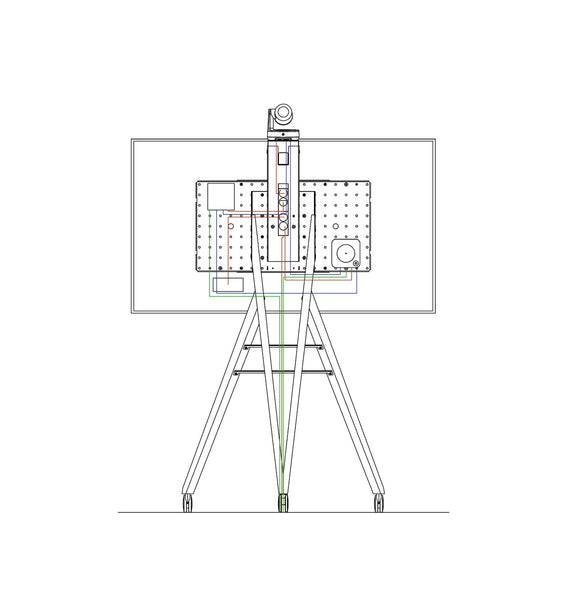


Between display and monitor carts, we have all VESA mounting dimensions from 20 x 20 to 80 x 40 cm - at
How do you care for a designer TV stand?
The care and maintenance of a designer TV stand depend primarily on the material it's made of. Here are some general tips:
- cleaningRegular cleaning with a soft and dry cloth Microfiber cloth That's often all your TV stand needs. Avoid harsh cleaning agents that could damage the surface.
- CareEspecially with wooden TV stands, it is helpful to occasionally treat them with a special cleaner. Furniture care oil Treat the wood to nourish and protect it. Metal and glass TV stands generally require less maintenance, but you should ensure all metal parts are free of rust and that glass surfaces are cleaned regularly to remove fingerprints and smudges.
- Check the stabilityRegularly check the stability of your TV stand and tighten all screws if necessary. For mobile TV stands, also ensure that the wheels move freely.
Good reasons for a TV stand or display cart from roomours
As with all
If you have any questions about our products and the technology to be used, please feel free to contact us by email at office@roomours.de oder You can reach us by phone at +49 89 1589 224-10. We'd be happy to advise you!




